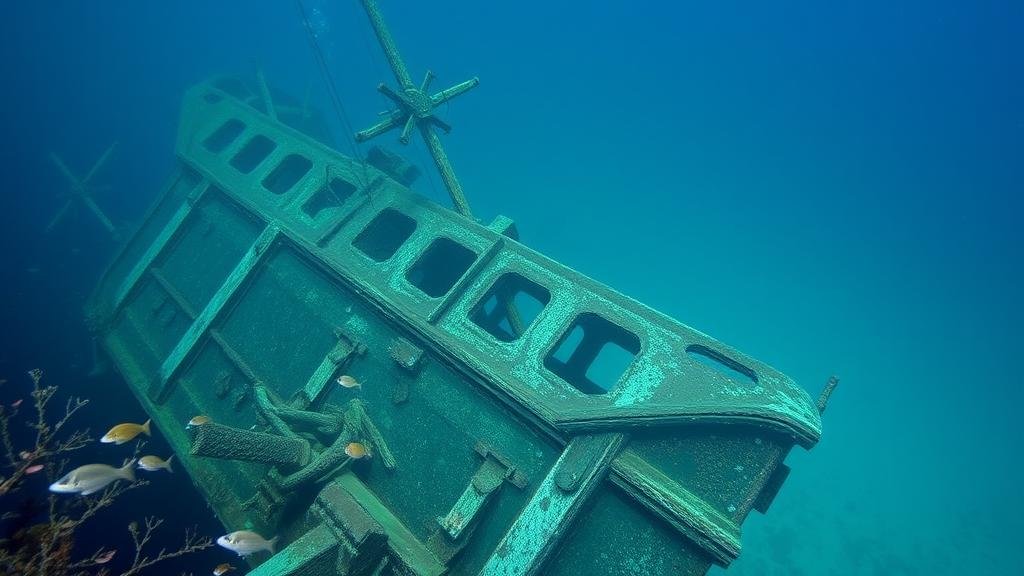Leveraging AI to Analyze Maritime Shipwreck Databases for Untapped Sites
Leveraging AI to Analyze Maritime Shipwreck Databases for Untapped Sites
The maritime domain is rich with history, yet many historical artifacts remain undiscovered beneath the waves. Recent advancements in artificial intelligence (AI) have opened new avenues for maritime archaeology, enabling researchers to leverage vast shipwreck databases to identify previously overlooked sites. This article explores the intersection of AI technology and maritime archaeology, evaluating its potential to unlock untapped shipwreck sites, supported by case studies and statistical analysis.
The Importance of Maritime Shipwreck Databases
Maritime shipwreck databases serve as the cornerstone for researchers seeking to study historical maritime activities. e databases often contain records of shipwrecks, including the ship type, the date of sinking, geographical coordinates, and historical narratives. According to the National Oceanic and Atmospheric Administration (NOAA), the United States alone has over 10,000 documented shipwrecks, with many more unidentified vessels lying on the seabed.
- The historical significance of shipwrecks includes insights into maritime trade routes, naval warfare, and cultural exchanges.
- These databases allow for comparative analyses between known shipwrecks and suspected sites, dating back hundreds of years.
The Role of AI in Data Analysis
AI technologies, including machine learning algorithms and neural networks, have transformed data analysis in numerous fields, including maritime archaeology. These techniques allow researchers to process large datasets efficiently and identify patterns that may be invisible to human researchers. For example, machine learning can categorize and synthesize data from multiple sources, including satellite imagery, historical texts, and hydrological studies.
Case Studies of AI Application
Several pioneering projects have utilized AI to analyze shipwreck data, leading to significant discoveries:
- Project MONUMENT: Initiated in 2020, this project utilized deep learning models to analyze bathymetric data and historical records, resulting in the identification of a previously undiscovered shipwreck off the coast of Spain dated to the 18th century.
- Digital Glider Study: In 2021, researchers applied machine learning techniques to underwater drone data around the Bahamas, uncovering several shipwrecks thought to be lost forever.
Potential for Untapped Sites
With AI-enhanced approaches, the prospect of discovering untapped shipwreck sites is more achievable than ever. By cross-referencing existing shipwreck databases with environmental data, researchers can pinpoint potential areas where ships may have sunk. For example, areas with strong currents and shallow waters are often overlooked due to their perceived risks but may actually be rich in undiscovered wrecks.
Challenges and Considerations
While the use of AI in maritime archaeology presents exciting opportunities, it is not without challenges. e include:
- The need for high-quality data: AI algorithms can only be as effective as the data fed into them. Incomplete or inaccurate shipwreck databases can lead to erroneous predictions.
- Ethical considerations: The excavation and preservation of shipwrecks must be approached with cultural sensitivity and respect for the artifacts.
Conclusion and Actionable Takeaways
Leveraging AI to analyze maritime shipwreck databases offers profound opportunities in the field of maritime archaeology. It can facilitate the identification of untapped sites and provide new insights into historical maritime activities. For researchers and organizations involved in underwater archaeology, it is crucial to invest in AI methodologies and collaborate with data scientists to harness this potential.
In summary, embracing AI technologies enables a more holistic approach to maritime archaeological research, fostering the discovery of significant artifacts that could reshape our understanding of history. As the field continues to evolve, ongoing collaboration and data-sharing will enhance the effectiveness of these initiatives.



